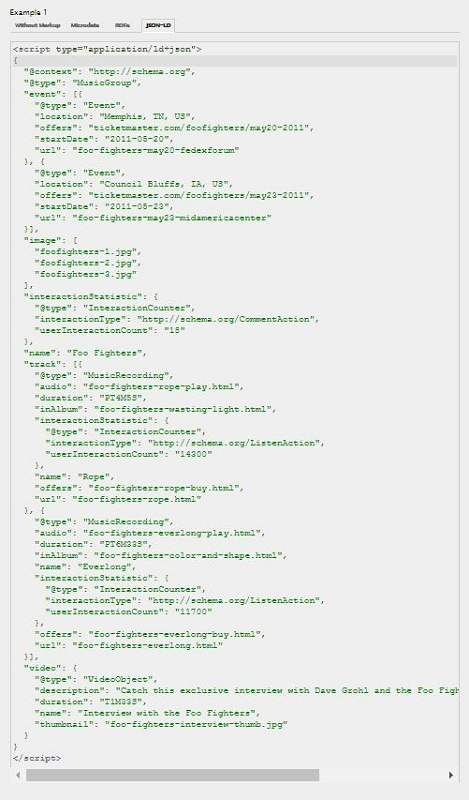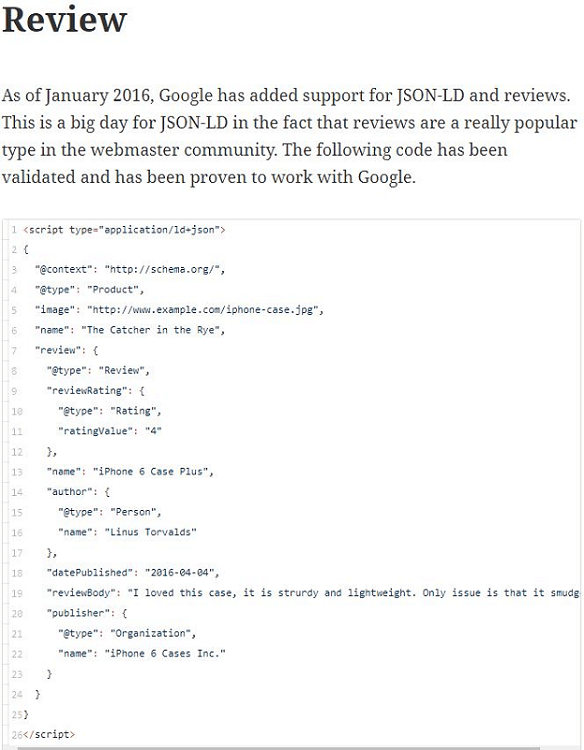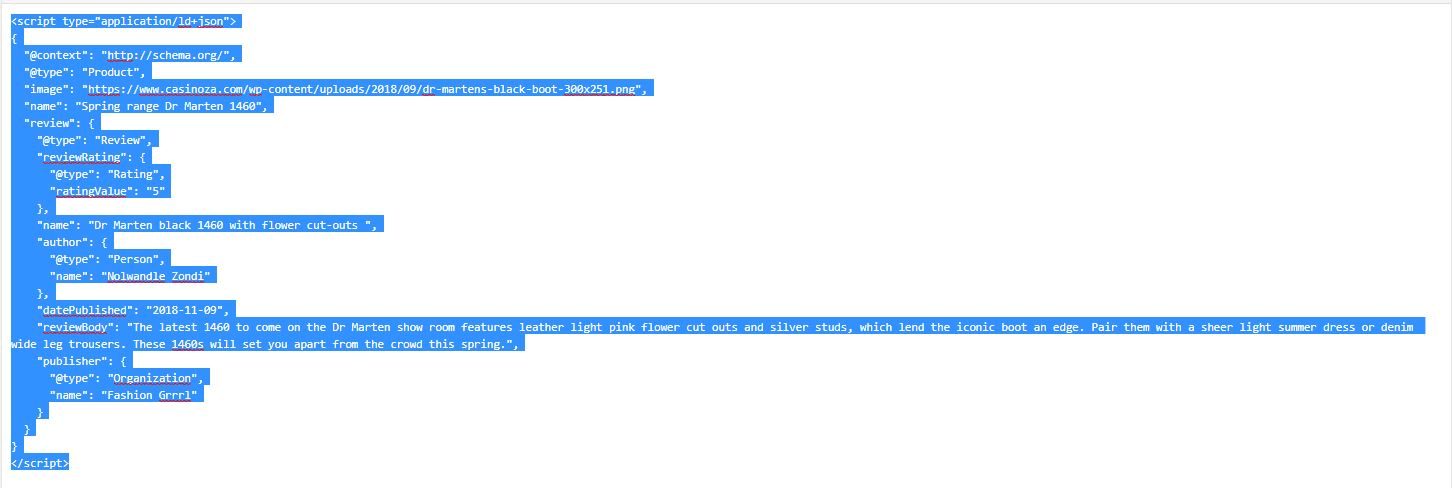Why Structured Data and Schema Markup Matters for SEO
As the way we use search engines becomes more sophisticated, the way crawlers index pages content needs to be improved. In comes structured data in SEO and its language framework schema markup.
What is Structured Data?
Structured data is the on-page code on your webpage that tells search engines what’s on a page. It’s far more detailed that just adding keywords – it provides explicit clues to the crawler about the meaning of the data on the page. Structured data markup provides both information about the page and the context of that information, helping bots classify the content on the page. Google’s search engine prefers the JSON-LD (JavaScript Object Notation for Linked Data) format for structured data.
Example of Structured Data
When looking up a review on Google, all the information included on the search results page along with the meta-title and meta-description is generated by including structured data in the page’s HTML text. These are usually the stars and numerical rating, and they are known as rich snippets.

What is Schema Markup?
This is the coding framework you use to write up the structured data on your webpage. It’s what tells the search engine result pages (SERPs) to display all the extra information that makes up a rich snippet. The first schema markup tool was an open-source development called schema.org and it’s free to use.
Example of Schema Markup
Let’s say you’ve uploaded a video onto your webpage about the film BLAKkKLANSMAN. Without using structured data on your webpage that uses a video schema markup to indicate to the search engine that there’s a video on BLAKkKLANSMAN, Google won’t pick it up. Using the video schema from schema.org for the video, Google picks it up as a video and shows up as rich snippets in the search engine results.
JSON-LD video schema markup from schema.org

Video rich snippet generated by the schema markup in SERPs

By using schema templates provided by sites like schema.org, you fill in only specific information which we’ll explore later.
How to Use Structured Data and Schema Markup
You can incorporate structured data into nearly everything on your website. Schema.org and the less intimidating schema markup site Steal Our JSON-LD have schemas available for your structured data needs. A simple search on schema.org will find you what you need. Steal Our JSON-LD has a whole list on the left-hand side.

Why is Structured Data so Important for SEO?
As mentioned earlier, structured data helps search engine crawlers understand your website and its contents better. Once a bot understands your pages better, it can index them more accurately. The art of focussing only on keywords is becoming outdated as search results are becoming more localised and personalised. The more information we give search engines about your website, the more likely it will come up.
Schema markups help websites rank better for their content because it includes information about the type of content it is. Likewise, studies find that websites with schema markups rank four times higher in SERPs than those without. A lot of sites really don’t make use of schema markups and structured data. Searchmetrics found that only 0.3% of sites on Google make use of structured data.
Using Structured Data and Schema Markup – a case study
Let’s say that we’re writing an article review on the latest Dr Martens boot for spring.

So, to incorporate structured data into my article for my blog to indicate to search engine crawlers that this is a review, you would go to Steal Our JSON-LD and copy the schema markup for reviews.

Then you’ll paste it into the text view above the article. After which you then fill in the required information which is:
- The image’s HTML code
- A general name for the product
- A rating out of five
- A second, more descriptive product name
- The name of the person writing the review
- The publishing date of the review
- A brief description of why you gave the product the rating you did
- The name of the organisation
So, for the review on the Dr Martens boot:
- The image HTML code is https://www.fashiongrrrl.com/wp-content/uploads/2018/09/dr-martens-black-boot-300×251.png
- The general product name is “Spring range Dr Martens 1460”
- The rating is 5
- The second descriptive product name is “Dr Martens black 1460 with flower cut-outs”
- The person writing the review is Brooke Seton.
- The publish date is 2018-11-09
- The brief description is “The latest 1460 to come on the Dr Martens show room features leather light pink flower cut outs and silver studs, which lend the iconic shoe a feminine edge. Pair them with a sheer light summer dress or denim wide leg trousers. Furthermore, these 1460s will set you apart from the crowd this spring.”
- And the organisation is Fashion Grrrl.
The schema markup code in HTML on the page looks like this:

Google Data Tools to Help You with Structured Data and Schema Markup
Google has tools to help you with dealing with the structured data and schema markup on your website.
Structured Data Testing Tool
This is Google’s own testing tool. It helps you with the schema markup during development i.e. when you’re writing the code. You can find it at https://search.google.com/structured-data/testing-tool. You simply copy-paste your page’s URL into the testing tool. It will generate the JSON-LD code on the left and a report on whether there are any errors or warnings on the right.
Rich Result Status Report
To monitor the health of the pages with structured data, use this tool which is available on Google’s Search Console. To access it, click on search appearance in the dashboard then the structured data tab underneath.

Resources
Finally, for more on structured data and schema markup, take a look at the following resources. We highly recommend watching the YouTube video.
- https://yoast.com/howto-structured-data/
- https://yoast.com/what-is-structured-data/
- https://schema.org/video
- https://www.adherecreative.com/blog/bid/153475/what-is-structured-data-and-why-does-it-matter-for-seo
- https://developers.google.com/search/docs/guides/intro-structured-data
- https://developers.google.com/search/docs/guides/sd-policies
- https://www.youtube.com/watch?v=xQeRA-Ojq5c
- https://neilpatel.com/blog/get-started-using-schema/
- https://www.searchmetrics.com/news-and-events/schema-org-in-google-search-results/
TL:DR – Download this Structured Data & Schema Markup slideshow on this topic.


